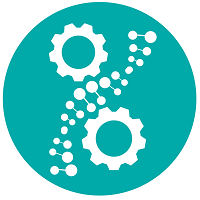Back
Manufacturing & Analytical Characterization – Biomolecular
Session: Symposium: Novel Manufacturing Approaches in Pharmaceuticals and Biopharmaceuticals (BM)
Understanding Phase Behavior and Adsorption of Monoclonal Antibodies and Surfactants During Formulation Processing
Tuesday, October 18, 2022
9:30 AM – 10:00 AM ET
Location: 205 C

Ankit D. Kanthe, PhD
Scientist
Bristol Myers Squibb
New Brunswick, New Jersey
Speaker(s)
Monoclonal antibodies (mAbs) have become a leading candidate for oncology-based therapeutics due to their unparalleled selectivity towards antigen binding. However, the adsorption of mAbs at the air/water interface is a critical issue in the production and use of antibody-based pharmaceuticals. Air/water interfaces are ever-present during the manufacture (filtration, chromatography) and production (freezing, thawing, filtration and filling) of the drug product, and air/water interfaces continue to be present during the storage, transportation, and administration of therapeutics to the patients. Surface-active surfactants such as polysorbates are widely used in biologic formulations in order to limit protein exposure to interfaces where they are susceptible to undesirable conformational changes, irreversible adsorption, and interfacial aggregation. However, the mechanism of the adsorption behavior of a large surface active biomacromolecule in the presence of surfactants is still an open scientific question. This talk will elucidate the molecular scale behavior of macromolecules absorbing and unfolding at the air/water interface using experimental tools (pendant bubble tensiometry and reflectance synchrotron X-ray methods) and homology modeling. Additionally, this presentation will discuss how we quantify the critical parameters and construct a general model to understand the competitive adsorption between mAbs and surfactants.
Learning Objectives:
- Participants will be able to develop understanding of the role of surfactants in biologics stabilization.
- Fundamental understanding of the mechanism of the adsorption behavior of a large surface active biomacromolecule in the presence of surfactants.
- Novel analytical tools to characterize molecular scale behavior of macromolecules at air/water interfaces.

